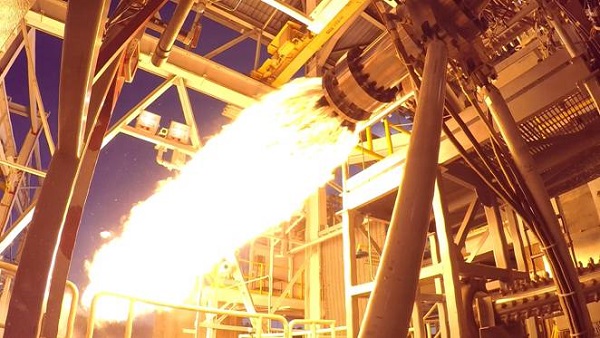GSAT-19
(GSLV Mk III-D1)
GSAT-19 is a Geostationary Communication satellite of India, configured
around ISRO’s standard I-3K bus. This is a high throughput communication
satellite is identified as the payload in this mission. This is the heaviest
satellite being launched from India till date.
LAUNCH:
GSAT-19
was launched on 5th June, 2017 by GSLV Mk III-D1 from the second
launch pad (SLP) at Satish Dhawan Space Centre(SDSC), SHAR.
This satellite is a three stage vehicle with
two solid motor strap-ons (S200), a liquid propellant core stage (L100)and a
cryogenic stage (C25).
 |
| Credit-ISRO |
CONFIGURATION:
GSLV
Mk II is designed to carry 4 ton class of satellites into Geosynchronous
Transfer Orbit (GTO) or about 10 tons to Low Earth Orbit (LEO), which is about
twice the capability of the GSLV Mk II.
This
is the first developmental flight of GSLV MkIII, a heavy-lift launch vehicle,
capable of lifting payload up to 4000 kg into GTO and 10,000 kg into LEO.
GSAT-19
is a communication satellite of India with a lift-off mass of 3136 kg
configured around ISRO’s standard I-3K bus.
GSLV Mk III uses cryogenic engines which is very complex and India got mastery in handling this. This is the biggest achievement for India which will help to send men to the planets in near future.
| Cryogenic engine during the preparation of GSLV Mk III (Source-ISRO) |
Read: Kalpana - 1
FEATURES AND APPLICATION:
The
two solar arrays of GSAT-19 consisting of Ultra Triple Junction solar cells
generate about 4500 Watts of electric power. Sun, Earth and Star sensors as
well as gyroscopes provide orientation reference for the satellite.
GSAT-19
maintains the orientation of satellite with the help of momentum wheels, magnetic
torquers and thrusters. The satellite’s propulsion system consists of a LiquidApogee Motor (LAM) and chemical
thrusters using liquid propellants for initial orbit raising and station-keeping.
GSAT-19
carries Ka/Ku-band through communication transponders. Besides, it carries a
Geostationary Radiation Spectrometer (GRASP) payload to monitor and study the
nature of charged particles.and the influence of space radiation on satellites
and their electronic components.
GSAT-19 also contain certain advanced spacecraft technologies including miniaturised heat pipe, fibre optic gyro, Micro-Electro-Mechanical System (MEMS) accelerometer, Ku-band TTC transponder with an indigenous Lithium-ion Battery.
The target of this satellite is to bring massive changes in the Indian communication system. This is the first satellite of India to give high internet services from space. This satellite gives 10 years of service to the Indian information sector.
Also Read: SRMSAT
 |
| Credit-ISRO |
OUTLINE -GSAT-19 :
Launch mass -3136 kg
Launch vehicle -GSLV Mk III-D1
Power -4500 Watts
Orbit -Geostationary
Mission Life -10 years
Application -Communication
Operator -INSAT
Owner -ISRO






0 Comments